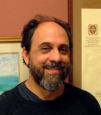 Prof. Dionisio Bernal, Northeastern University, USA.
Prof. Dionisio Bernal, Northeastern University, USA.
Dionisio Bernal obtained his PhD in 1979 at the University of Tennessee and is a Professor and director of the structures area at Northeastern University (NU) in Boston. He is the recipient of the Moisseiff
Award from the American Society of Civil Engineering (ASCE) for his work on instability of structures subjected to strong earthquakes and of the Martin W. Essigmann and the Hayes awards for teaching and research
excellence at NU. He has published over 100 papers on structural dynamics, earthquake engineering and damage characterization from measured signals and is co-Author of a McGraw-Hill textbook on Reinforced Concrete
Design. He served as the Chair of the Health Monitoring task group of the Engineering Mechanics division of ASCE from 2001 to 2003.
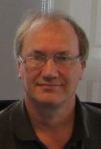 Prof. James Brownjohn, University of Sheffield, UK.
Prof. James Brownjohn, University of Sheffield, UK.
Prof. Brownjohn joined the University of Sheffield in 2005 after periods at University of Bristol (1984-1992), Nanyang Technological University Singapore (1992-2004) and University of Plymouth (2004-2005).
His academic career has revolved around experimental assessment of the performance of a range of civil structures, using full-scale dynamic testing, long-term monitoring and shaking table testing. His present
research and professional interests include wind engineering, earthquake engineering, and structural health monitoring (SHM), finite element model updating, vibration serviceability, system identification and
biomechanics. He has published in all these areas in a number of journals. His experience with ambient vibration testing and operational modal analysis using minimal portable equipment is a complement to the
forced vibration testing approach traditionally used by the Vibration Engineering Section, which he leads. Prof. Brownjohn is a Fellow of the International Society for Structural Health Monitoring of Intelligent
Infrastructure (ISHMII), and a member of the ASCE Committee on Structural Identification of Constructed Systems and is a founding director of Full Scale Dynamics Ltd, a University spin-out company.
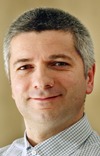 Prof. Branko Glisic, Princeton University, USA.
Prof. Branko Glisic, Princeton University, USA.
Prof. Branko Glisic received his degrees in Civil Engineering and Theoretical Mathematics at University of Belgrade, Serbia, and PhD at the EPFL, Switzerland. His thesis focuses on the development of fiber
optic sensors for particular applications, and characterization of concrete at very early age. He was employed at SMARTEC SA, Switzerland, where he was involved in research and engineering at different levels
of responsibility in numerous structural health monitoring (SHM) projects. Since February 2009 he has been employed as an Assistant Professor at Department of Civil and Environmental Engineering of Princeton
University. His main areas of interest are SHM methods, advanced sensory systems, smart structures, SHM data management, and sustainable engineering. Prof. Glisic is author and co-author of more than hundred
published papers, university and professional courses on SHM, and a book entitled "Fibre Optic Methods for Structural Health Monitoring" (2007). He is a member of several professional associations
(ISHMII, ACI, IABSE, IABMAS, ACSE, ISMA) and a member of the editorial board of ISHMII's magazine "The Monitor".
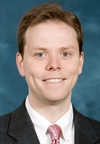 Prof. Jerome P. Lynch, University of Michigan, USA.
Prof. Jerome P. Lynch, University of Michigan, USA.
Dr. Jerome Lynch is an Associate Professor of Civil and Environmental Engineering at the University of Michigan; he is also holds a courtesy faculty appointment with the Department of Electrical Engineering
and Computer Science. Dr. Lynch completed his graduate studies at Stanford University where he received his PhD in Civil and Environmental Engineering in 2002, MS in Civil and Environmental Engineering
in 1998, and MS in Electrical Engineering in 2003. Prior to attending Stanford, Dr. Lynch received his BE in Civil and Environmental Engineering from the Cooper Union in New York City. His current research
interests are in the areas of wireless structural monitoring, feedback control systems, and sustainable built environments. Dr. Lynch is credited with early field deployments of wireless sensors in full-scale
operational bridge structures world-wide. In addition, Dr. Lynch has assumed leadership roles in the international structural health monitoring community having served as the Chair of the ASCE EMI Structural
Health Monitoring and Control Committee, Co-Chair of the SPIE Smart Structure Conference, Editor of Earthquakes and Structures, and Associate Editor of ASCE’s Journal of Engineering Mechanics.
More recently, Dr. Lynch has served as Founder and Vice President of Civionics LLC, a spin-out company from the University of Michigan. Dr. Lynch was awarded the 2009 Presidential Early Career Award
for Scientists and Engineers (PECASE) by the White House in recognition of his contributions to the structural health monitoring field.
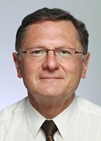 Prof. Wieslaw M. Ostachowicz, Polish Academy of Sciences (IFFM), Poland.
Prof. Wieslaw M. Ostachowicz, Polish Academy of Sciences (IFFM), Poland.
Dr. Wieslaw Ostachowicz is the Full Professor of Mechanical Engineering at the Institute of Fluid Flow Machinery, Polish Academy of Sciences. He has led dynamics research throughout the last twenty years
as the chairman of the Department: Mechanics of Intelligent Structures. His research spans several important sub–disciplines: smart structures and materials, structural health monitoring, extended non–destructive
testing and damage assessment analysis. Prof. Ostachowicz personally specializes in various structural health monitoring techniques, vibration control, structural dynamics, composite structures, multifunctional
materials, smart materials and structures, damage assessment of structures, working in these fields both theoretically and experimentally. In the past six years his research has focused on the development and
use of the Spectral Finite Element Method for damage assessment as well as smart materials applications. Prof. Ostachowicz has published 4 monographs, 6 book chapters, 4 proceedings volumes, 127 articles distributed
in the highest–quality international journals, and over 100 technical reports in the fields of structural dynamics and SHM. Dr. Ostachowicz has assumed leadership roles in the international smart structures
and structural health monitoring community having served as the Associate Editor of the following journals: Structural Health Monitoring; Smart Materials and Structures; Intelligent Material Systems and Structures.
More recently Dr Ostachowicz has served as the Chairman of the SHM Person of the Year Awards Committee.
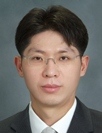 Prof. Hoon Sohn, Korean Advanced Institute of Science and Technology (KAIST), Korea. Prof.
Hoon Sohn received his B.S. (1992) and M.S. (1994) degrees from Seoul National University, Seoul Korea and PhD (1999) from Stanford University, California, USA, all in Civil Engineering. He is now KAIST Chaired
Professor at KAIST and Edward M. Curtis Visiting Professor at Purdue University in USA. Over the last fifteen years, his research interest has been in the area of structural health monitoring and smart sensing
technologies. He has published over 80 refereed journal articles, over 200 conference proceedings, and 5 book chapters. This year, he has been selected as among the 100 most promising individuals in Korea by
one of the three major newspapers in Korea. He was also the recipient of SHM Person-of-Year Award at the 2011 International workshop on SHM and 2008 Young Scientists Award in Korea, which is similar to the Presidential
Early Career Award from US National Science Foundation (PECASE Award). He serves as Associate Editor of the International Journal of Structural Health Monitoring and Journal of Computing for Civil Engineering,
and as Editorial Board Member of the International Journal of Smart Structures and Systems and International Journal of Structural Control and Health Monitoring.
Prof. Hoon Sohn, Korean Advanced Institute of Science and Technology (KAIST), Korea. Prof.
Hoon Sohn received his B.S. (1992) and M.S. (1994) degrees from Seoul National University, Seoul Korea and PhD (1999) from Stanford University, California, USA, all in Civil Engineering. He is now KAIST Chaired
Professor at KAIST and Edward M. Curtis Visiting Professor at Purdue University in USA. Over the last fifteen years, his research interest has been in the area of structural health monitoring and smart sensing
technologies. He has published over 80 refereed journal articles, over 200 conference proceedings, and 5 book chapters. This year, he has been selected as among the 100 most promising individuals in Korea by
one of the three major newspapers in Korea. He was also the recipient of SHM Person-of-Year Award at the 2011 International workshop on SHM and 2008 Young Scientists Award in Korea, which is similar to the Presidential
Early Career Award from US National Science Foundation (PECASE Award). He serves as Associate Editor of the International Journal of Structural Health Monitoring and Journal of Computing for Civil Engineering,
and as Editorial Board Member of the International Journal of Smart Structures and Systems and International Journal of Structural Control and Health Monitoring.

